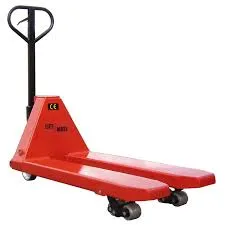


The Importance of Pallet Truck Design in Modern Warehousing
In the fast-paced world of logistics and warehousing, efficiency is paramount. One of the key tools that facilitate this efficiency is the pallet truck. Designed to transport heavy loads with ease, the pallet truck - also known as a pallet jack - has evolved significantly over the years. Effective pallet truck design is crucial for optimizing storage space, improving safety, and enhancing overall productivity in warehouses.
Ergonomic Considerations
One of the primary aspects of pallet truck design is ergonomics. The primary users of pallet trucks are warehouse employees who often need to move heavy loads multiple times a day. A well-designed pallet truck incorporates ergonomic features, such as an adjustable handle height and an easy-to-operate hydraulic lifting mechanism. These features minimize strain on the operator's back and arms, thus preventing workplace injuries and enhancing worker satisfaction. The use of ergonomic grips can further improve maneuverability and comfort, allowing users to operate these trucks for longer periods without discomfort.
Load Capacity and Stability
Another critical design element is load capacity. A pallet truck must be able to transport heavy loads efficiently without compromising safety. Manufacturers often test their products to ensure they meet specified load capacities, which typically range from 2,200 to 5,500 pounds or more. Additionally, stability is of utmost importance; a well-designed pallet truck should have a low center of gravity and wide wheelbase to minimize the risk of tipping. This stability not only protects the product being transported but also safeguards the operator and bystanders.
Maneuverability and Design Flexibility

The design of the wheels and the overall structure of the pallet truck contribute significantly to its maneuverability. A well-engineered pallet truck should feature swivel castor wheels that allow for smooth navigation in tight spaces. This is particularly vital in crowded warehouse settings where space is often at a premium. Some advanced models even include electric drive systems, which can drastically reduce the physical effort required from operators while improving speed and efficiency.
Moreover, the design of the fork is also critical. Different types of pallets (standard, euro, etc.) require specific fork dimensions and configurations. A versatile pallet truck design can accommodate various pallet types, thus increasing its utility in diverse operational environments. Adjustable forks or forks with varying widths can cater to multiple pallet sizes and dimensions, promoting flexibility in the handling of goods.
Safety Features
Safety in warehouse operations cannot be overstated. Modern pallet trucks are now designed with safety features such as integrated braking systems, visual indicators for load security, and automatic shut-off mechanisms. For instance, trucks equipped with speed regulators can help maintain safe operation speeds, particularly when navigating around corners or congested aisles. Additionally, clear visibility and reflectors can enhance safety in low-light conditions.
Conclusion
The evolution of pallet truck design plays a significant role in enhancing operational efficiency in warehouses. With a focus on ergonomics, load capacity, stability, maneuverability, and safety, modern pallet trucks are indispensable tools that streamline material handling processes. As the demands of logistics continue to grow, innovative designs will likely emerge, further integrating technology to create more intuitive and efficient solutions. For warehouse operators, investing in quality pallet trucks is not just about enhancing productivity; it can also lead to improved safety and employee morale, which are critical for sustained success in the industry.



